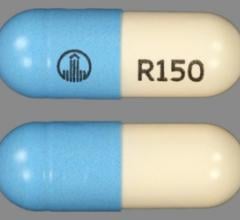
November 11, 2015 — Brigham and Women’s Hospital in Boston and Boehringer Ingelheim announced the results of a new interim analysis from a long-term study evaluating the safety and effectiveness of Pradaxa (dabigatran etexilate mesylate) relative to warfarin in routine clinical practice. These data, from a pooled analysis of two large U.S. commercial health insurance databases, showed patients with non-valvular atrial fibrillation (NVAF) treated with dabigatran, a novel oral anticoagulant (NOAC), had fewer strokes and fewer major bleeding events compared to NVAF patients treated with warfarin. The findings were presented at the American Heart Association (AHA) Scientific Sessions 2015 in Orlando.
“Beyond clinical trials, there is a wealth of available health insurance data that provides an excellent opportunity to grow our knowledge of oral anticoagulant use and outcomes for patients,” said lead investigator John Seeger, PharmD, DrPH, Department of Medicine, Brigham and Women’s Hospital, a teaching-affiliate of Harvard Medical School. “These real-world data further define the safety and effectiveness of dabigatran for patients and its use in routine care, and are consistent with the results of the pivotal RE-LY clinical trial.”
The primary study outcomes were stroke and major bleeding rates during Pradaxa and warfarin treatment, based on data collected over 32 months from 44,672 NVAF patients (22,336 propensity score matched Pradaxa and warfarin treatment initiators) in two insurance databases — Truven MarketScan (18,276 patients per group) and Optum Clinformatics (4,060 patients per group).
Researchers identified 65 strokes for Pradaxa-treated patients (0.73 incidence rate per 100 patient years) and 78 strokes for warfarin-treated patients (1.08 incidence rate per 100 patient years), representing a 28 percent reduction in stroke risk with Pradaxa compared to warfarin (HR 0.72; 95% CI 0.52 – 1.00). In addition, researchers reported 395 major bleeding events for Pradaxa-treated patients (4.47 incidence rate per 100 patient years), compared to 459 events for warfarin-treated patients (6.42 incidence rate per 100 patient years), representing a 26 percent reduction in the risk of major bleeding events with Pradaxa compared to warfarin (HR 0.74; 95% CI 0.64 – 0.84). There were 238 major gastrointestinal bleeding events for Pradaxa-treated patients (2.69 incidence rate per 100 patient years) and 213 for warfarin treated patients ((2.97 incidence rate per 100 patient years); HR 0.95; 95% CI 0.79 – 1.14).
The analysis is part of an ongoing research program to evaluate prescribing patterns and real-world safety and effectiveness of oral anticoagulants, including PRADAXA, for reducing stroke risk. Data were collected from the two databases between October 2010 and June 2013.
New users of Pradaxa or warfarin were matched on various demographic and clinical criteria (“propensity-score-matched”). There were 22,336 propensity-score-matched NVAF patients in the Pradaxa and warfarin groups when numbers were pooled across the two data sources. Patients were followed up until they switched or discontinued anticoagulant treatment, experienced an outcome event or discontinued enrollment. The average follow-up period was five months for Pradaxa-treated patients and four months for warfarin-treated patients. Effectiveness assessments beyond the first six months of therapy were limited by the short average follow-up time. Future analyses from this sequential long-term study program will yield more stable estimates including a larger number of patients.
With this collaboration, Boehringer Ingelheim and Brigham and Women’s Hospital aim to gather data representing more than 100,000 NVAF patients in the United States.
For more information: www.boehringer-ingelheim.com


 August 28, 2023
August 28, 2023 








